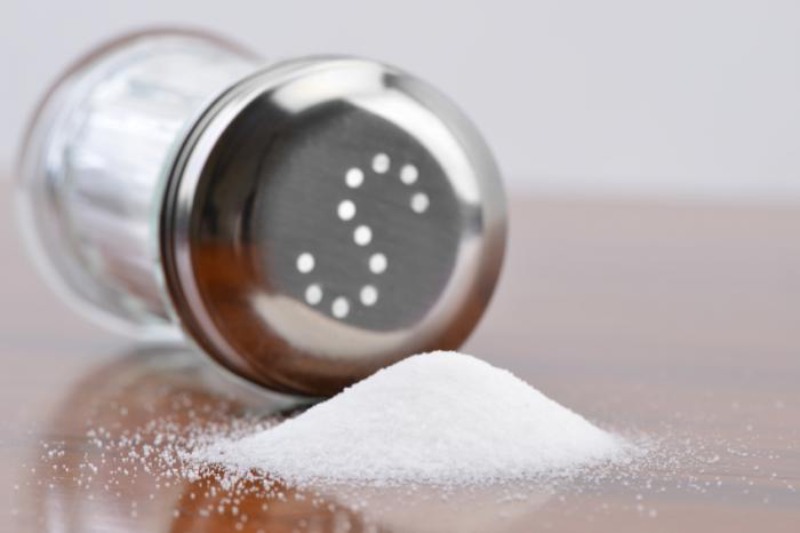While adding too much salt might be a delightful way to flavor meals, it can also be detrimental to heart health.
According to recent studies, using salt alternatives to reduce your sodium intake may reduce your chance of dying from heart disease.
A comprehensive analysis of sixteen randomized controlled trials, spanning six months or more, that were published in the Annals of Internal Medicine journal revealed a correlation between the use of salt substitutes during cooking and a decreased risk of premature cardiovascular disease death.
A decrease in blood pressure was also associated with salt substitution, and this impact was comparable to that of blood pressure drugs.
The trials examined the effects of sodium chloride, commonly known as ordinary salt, and a salt replacement made up of 60% to 75% sodium chloride and 25% to 30% potassium chloride.
The relationship between heart disease risk and salt
Dietitian Michelle Routhenstein of Entirely Nourished, specializing in preventative cardiology, says these results are in line with her expectations.
The results, she says, “are not surprising because we already have clinical research showing that high sodium diets are linked to cardiovascular disease due to their negative impact on blood pressure and blood vessel health, function, and integrity.” “High blood pressure, artery damage, and fluid retention are all associated with excessive salt consumption, which raises the risk of cardiovascular disease.”
Memorial Hermann registered dietician Chelsea Johnson, MS, RD, LD, CBC, concurs.
One of the main risk factors for heart-related incidents, according to her, is the association between high blood pressure and salt intake.
Accordingly, cutting back on salt in your diet can raise blood pressure to healthier levels, which can lower your chance of cardiovascular events.
Although salt is a common condiment, there are other ways to enhance the flavor of your food. Among the alternatives is potassium chloride.
Routhenstein defines “salt substitution as simply substituting alternatives that contain less sodium or even include other minerals for some or all of the table salt in a person’s diet.”
Kalium chloride, magnesium chloride, and specific herbs and spices are a few typical examples.
“Put simply, salt substitutes, such as those containing potassium chloride, help lower cardiovascular risk factors by reducing sodium intake while increasing potassium levels. This helps to control blood pressure and potentially reduce strain on the heart muscle,” Routhenstein surmises.
How to easily replace salt in your diet with other foods
What therefore should you do if you want to cut back on the amount of salt you consume?
First things first, knowing the recommended daily intake of salt may be useful.
The American Heart Association states that a daily intake of 2300 mg of salt is advised, with a 1500 mg maximum.
Routhenstein continues, “It is recommended to keep your sodium intake per serving to no more than 350–500 mg if you have high blood pressure or cardiovascular disease.”
“Consider making a gradual transition [to salt substitutes] to assess the amount needed and how it impacts your enjoyment of the food,” she suggests.
It’s crucial to remember, though, that substituting salt shouldn’t be done in excess either.
“Excessive intake of potassium chloride, typically found in a salt substitute, can lead to hyperkalemia, potentially leading to conditions like heart arrhythmias and cardiogenic shock,” Routhenstein warns.
Moderation is essential, as it is with diet in many cases.
Additional advice to cut back on salt
Aside from salt replacements, what other steps can you take to cut back on salt?
Fast food and restaurant meals, as well as packaged and processed foods, are the main sources of salt in the American diet. Therefore, Johnson says, “the more foods that can be prepared at home, the better.”
To reduce the likelihood that you will use table salt, you might think about clearing it off your dinner table as well. Johnson suggests using different herbs and spices in their place.
Routhenstein concurs. “Consider adding fresh herbs, spices, and citrus juices to your recipes instead of only using salt replacements.
These can enhance the flavor and intricacy of your food without the need of salt. Try out several combinations to make delectable and fulfilling meals, she advises.
When purchasing prepared meals, cooking sauces, and other processed foods, it’s a good idea to keep an eye out for products that have labels that indicate “low sodium,” “reduced sodium,” and “no added salt.”
Still, a word of caution. Johnson states that for a food item to be classified as low sodium, it must contain less than 140 mg of sodium per serving, therefore make sure to read the label.
Lastly, you can combine foods high in potassium with foods high in sodium, such as fish, beans, edamame, beets, or normal potatoes.
According to Routhenstein, this can lessen the impact of sodium.
Conclusion
Although eating too much salt is unhealthy, you can reduce your risk of heart disease by adding herbs and spices in your cooking or by substituting salt with potassium chloride-containing alternatives.
It’s also a good idea to limit your intake of fast food and steer clear of packaged items heavy in sodium.

 Diabetology2 weeks ago
Diabetology2 weeks ago
 Diabetology2 weeks ago
Diabetology2 weeks ago
 Diabetology5 days ago
Diabetology5 days ago
 Diabetology4 days ago
Diabetology4 days ago
 Diabetology4 days ago
Diabetology4 days ago
 Diabetology3 days ago
Diabetology3 days ago
 Diabetology17 hours ago
Diabetology17 hours ago
 Diabetology18 hours ago
Diabetology18 hours ago















